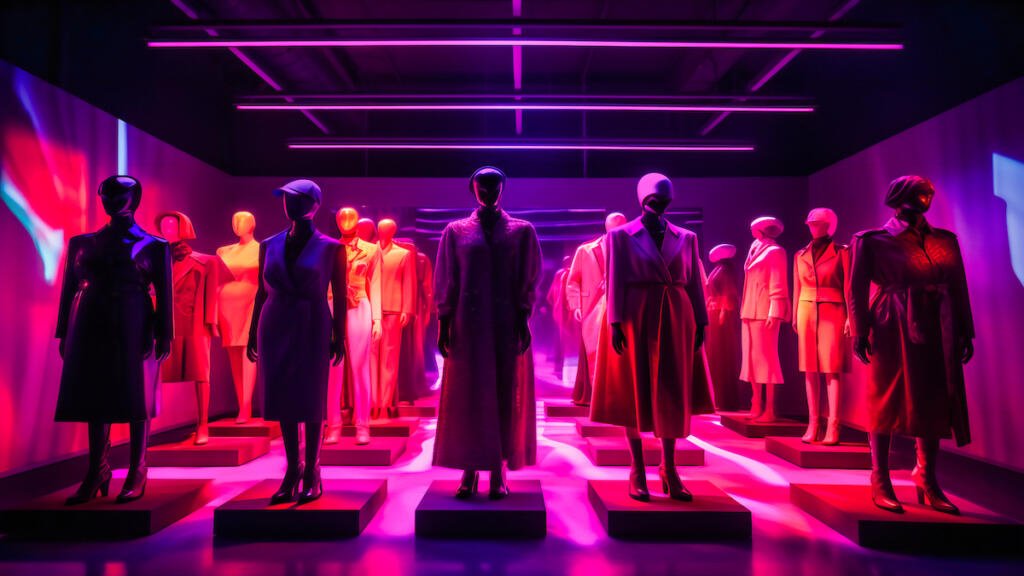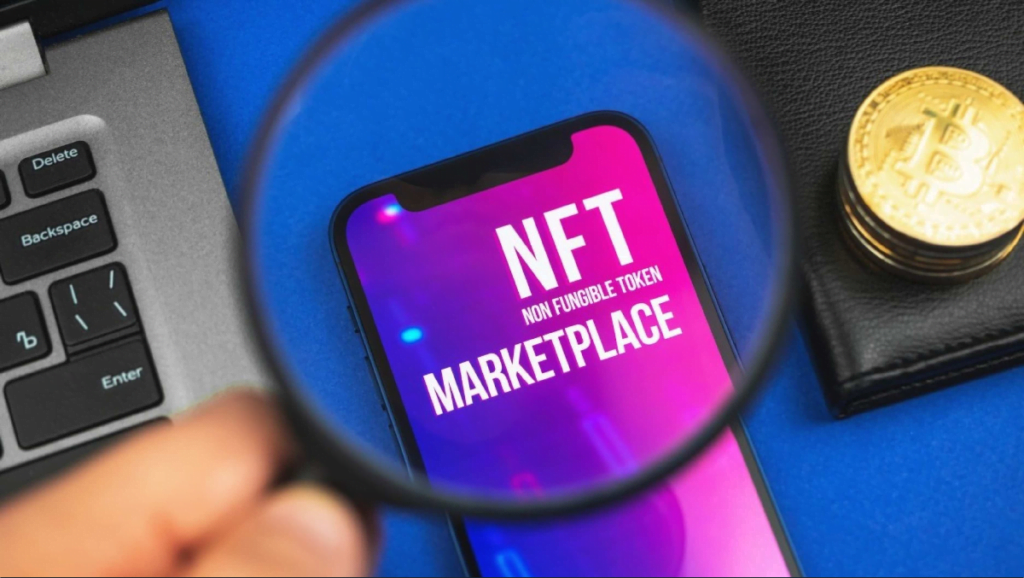The world of Non-Fungible Tokens (NFTs) is evolving at a rapid pace. New niches are emerging, offering unique opportunities for artists, collectors, and investors.
In this article, we delve into these emerging NFT niches. We explore how they are shaping the industry and creating new avenues for digital ownership.
From digital art and collectibles to virtual real estate and gaming NFTs, the landscape is diverse. Each niche presents its own unique opportunities and challenges.
We also look at how NFT artists are leveraging these niches. They are finding innovative ways to monetize their content and connect with their audience.
Whether you’re an NFT enthusiast, a digital artist, or a curious investor, this article will provide valuable insights.
Join us as we navigate the exciting world of NFT niches.
Understanding NFTs and Their Unique Value
Non-Fungible Tokens, or NFTs, are a type of digital asset. They exist on a blockchain, similar to cryptocurrencies like Bitcoin or Ethereum.
However, unlike cryptocurrencies, each NFT is unique. This uniqueness is what makes them “non-fungible”.
NFTs can represent a wide range of digital and physical assets. These include digital art, music, virtual real estate, and even tweets.
The value of NFTs lies in their uniqueness and the digital ownership they provide. When you buy an NFT, you’re buying a digital certificate of ownership for a unique asset.
This ownership is secured by blockchain technology. It ensures that each NFT can be traced back to its original creator.
Here are some key features that make NFTs unique:
- Uniqueness: Each NFT has distinct properties and cannot be replaced by another.
- Indivisibility: NFTs cannot be divided into smaller units. They are bought, sold, and held as whole items.
- Provenance: The history of an NFT, including its origin and ownership changes, is recorded on the blockchain.
- Interoperability: NFTs can be bought, sold, and traded across different platforms thanks to standard protocols like ERC-721 and ERC-1155 on the Ethereum blockchain.
- Ownership: Owning an NFT means having a blockchain-based proof of ownership for a unique asset. This can be a digital artwork, a virtual real estate property, a collectible, or any other unique item.
The Current Landscape of NFT Niches
The NFT market has seen explosive growth in recent years. This growth has led to the emergence of various NFT niches, each with its unique characteristics and opportunities.
One of the most prominent niches is digital art. Artists are now able to tokenize their artworks and sell them as NFTs. This has opened up new avenues for artists to monetize their work and reach a global audience.
Another emerging niche is virtual real estate. In virtual worlds like Decentraland and Cryptovoxels, users can buy, sell, and trade virtual land parcels as NFTs. These virtual properties have seen significant appreciation in value, attracting investors and speculators.
Gaming is another sector where NFTs are making a big impact. Games like Axie Infinity and CryptoKitties allow players to own, trade, and sell unique in-game assets as NFTs. This has created a new economy within the gaming world, where players can earn real-world value from their in-game activities.
The NFT landscape is continually evolving, with new niches emerging as the technology matures. As we delve deeper into this article, we will explore these niches in more detail and look at the trends shaping the future of NFTs.

Digital Art and Collectibles: The Pioneers of NFTs
Digital art and collectibles have been at the forefront of the NFT revolution. Artists and creators have embraced NFTs as a new medium for expressing their creativity and monetizing their work.
The sale of Beeple’s artwork for $69 million at Christie’s auction house brought NFTs into the mainstream. This event highlighted the potential of NFTs to disrupt traditional art markets. It also underscored the value of digital ownership and the willingness of collectors to pay for unique digital assets.
NFT collectibles, like CryptoPunks and Bored Ape Yacht Club, have also gained popularity. These digital collectibles have created a vibrant market where users trade unique digital assets based on their rarity and desirability. The success of these projects illustrates the potential of NFTs to create new forms of digital culture and community.
Virtual Real Estate: Investing in Digital Land
Virtual real estate is another emerging NFT niche that is gaining traction. Digital land in virtual worlds like Decentraland, Cryptovoxels, and Somnium Space is being bought and sold as NFTs.
Investors are betting on the potential of these virtual spaces as the metaverse grows. They see value in owning digital land that can be developed into virtual businesses, art galleries, or social spaces.
The concept of virtual real estate expands the idea of digital ownership. It shows how NFTs can represent more than just art or collectibles, but also spaces and experiences in the virtual world.

Gaming NFTs: A New Era for Gamers and Developers
The gaming industry is another sector where NFTs are making a significant impact. NFTs are being used to create unique in-game assets that players can own, trade, or sell.
Games like Axie Infinity, CryptoKitties, and The Sandbox are leading the way in this NFT niche. They offer players the chance to earn real-world value from their in-game achievements.
This shift is not just beneficial for players. Game developers also stand to gain from the integration of NFTs. They can create new revenue streams and foster stronger player engagement.
The rise of gaming NFTs is a testament to the versatility of this technology. It shows how NFTs can enhance digital experiences and create new economic models in the virtual world.
Utility NFTs: Beyond Collectability
NFTs are not just about digital art or gaming assets. They are also being used to create utility tokens that offer real-world benefits to their owners.
For instance, some NFTs provide access to exclusive content or experiences. Others might represent membership in a club or community. These utility NFTs are expanding the use cases for non-fungible tokens beyond mere collectability.
The emergence of utility NFTs is a sign of the growing maturity of the NFT market. It shows that NFTs can be more than just digital collectibles. They can also serve practical purposes and offer tangible value to their owners.

NFTs in the Metaverse: The Future of Virtual Interaction
The metaverse is a virtual universe that exists parallel to our physical world. It’s a place where people can interact, work, play, and even own property. NFTs are playing a crucial role in shaping this digital frontier.
NFTs in the metaverse can represent anything from virtual real estate to digital clothing for avatars. They can also be used to create unique experiences, such as virtual concerts or art exhibitions. This is opening up new opportunities for artists, creators, and businesses.
The integration of NFTs into the metaverse is still in its early stages. But as the technology evolves, we can expect to see more innovative uses of NFTs in this virtual world. The metaverse could become a major new niche for NFTs in the future.
The Rise of NFTs in Music and Entertainment
The music and entertainment industry is another sector where NFTs are making a significant impact. Artists and creators are using NFTs to monetize their work in new and innovative ways.
For instance, musicians are releasing their songs and albums as NFTs, allowing fans to own unique copies of their music. This not only provides a new revenue stream for artists but also creates a closer connection between artists and their fans.
In the entertainment industry, NFTs are being used to create unique collectibles related to movies, TV shows, and celebrities. This trend is only expected to grow as more people become familiar with the concept of NFTs.

Fashion and NFTs: A Stylish Integration
The fashion industry is not one to be left behind in the NFT revolution. Designers and brands are exploring the potential of NFTs to create digital fashion items and accessories.
These digital fashion items can be used in virtual worlds and metaverses, allowing users to express their style in the digital realm. This opens up a whole new market for fashion brands and provides a unique way for consumers to engage with fashion.
As the line between the physical and digital worlds continues to blur, the integration of fashion and NFTs is expected to become more prevalent. This is an exciting development that could redefine the concept of fashion and style in the digital age.
NFTs and Sports: Engaging Fans in New Ways
The sports industry is also tapping into the potential of NFTs. Sports teams and leagues are using NFTs to create digital collectibles and offer unique fan experiences.
These NFTs can range from digital trading cards to virtual tickets that provide exclusive access to games and events. This not only provides a new revenue stream for sports organizations but also enhances fan engagement and loyalty.
As the sports industry continues to embrace digital transformation, the use of NFTs is set to become a game-changer. It’s an exciting time for sports fans who can now own a piece of their favorite teams and players in the form of NFTs.

The Role of NFT Marketplaces and Platforms
NFT marketplaces and platforms play a crucial role in the NFT ecosystem. They provide a space where creators can mint, sell, and buy NFTs.
These platforms also offer a range of tools and services to help users navigate the NFT space. This includes features like price tracking, rarity analysis, and community forums.
As the NFT market continues to grow, we can expect to see more specialized platforms catering to specific NFT niches. This will further enhance the accessibility and diversity of the NFT market.
Environmental and Legal Considerations in NFTs
The rise of NFTs has brought with it a host of environmental and legal considerations. On the environmental front, concerns have been raised about the energy consumption of blockchain networks, particularly those that use proof-of-work consensus mechanisms.
On the legal side, issues around intellectual property rights and copyright have come to the fore. As NFTs continue to permeate various sectors, it’s crucial for artists, creators, and buyers to understand the legal implications.
In the future, we can expect to see more regulations and guidelines being introduced to address these concerns. This will help ensure the sustainable and ethical growth of the NFT market.

The Future of NFT Niches: Trends to Watch
As we look to the future, several trends are set to shape the evolution of NFT niches. One of these is the increasing integration of NFTs into mainstream industries. From fashion and music to real estate and gaming, NFTs are becoming a common feature in various sectors.
Another trend to watch is the rise of utility NFTs. These are tokens that offer real-world benefits to their owners, such as access to exclusive content or experiences. This adds a new dimension to the value proposition of NFTs, beyond mere collectability.
Here are a few more trends to keep an eye on:
- The growth of NFT marketplaces and platforms
- The development of cross-platform NFT interoperability
- The use of NFTs for charitable causes and social impact
- The emergence of NFT lending and financialization
These trends indicate that the NFT market is far from reaching its peak. Instead, it’s continually evolving, offering new opportunities for artists, creators, and investors alike.
Embracing the NFT Revolution
The world of NFTs is a dynamic and exciting frontier. It’s a space where art, technology, and commerce intersect in new and innovative ways. As we’ve seen, the potential applications for NFTs are vast and varied, spanning numerous industries and sectors.
Embracing the NFT revolution means staying informed about these emerging niches. It means understanding the trends that are shaping the market and the opportunities they present. Whether you’re an artist, a collector, or an investor, there’s no better time than now to dive into the world of NFTs.
Featured image: Depositphotos




